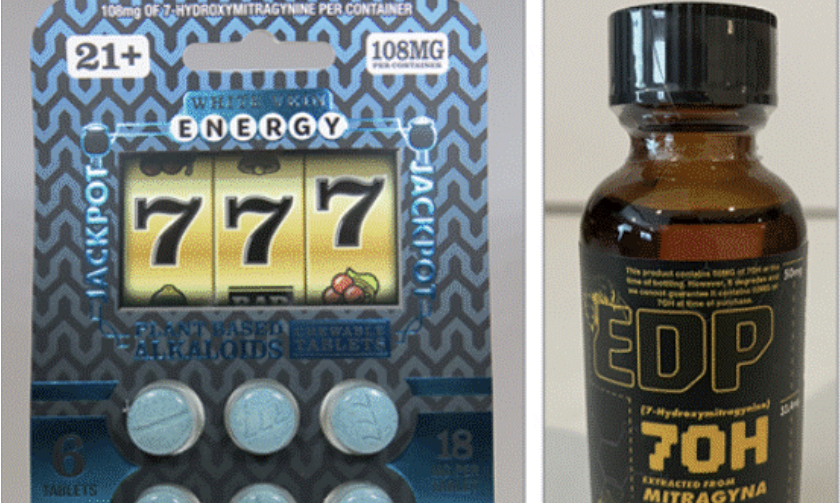Mutual Attraction

Two Kansas City artists on view at the Byron C. Cohen Gallery are in near opposition to each other.
One artist’s work appears busy, complicated and nearly incomprehensible in its nest of lines, its bustle of paint splotches and splashes colliding in a delicately arranged mess.
The other’s work creates a place that’s quiet and subdued, demanding to be inhabited more than merely looked at, a minimalist shadow show.
The gallery’s upper level exhibits new paintings by Grant Miller; the lower level holds James Woodfill‘s site-specific installation Approximate Place. This is Miller’s first solo exhibition, but Woodfill’s work shows up in Kansas City at points near (the meditative Sky Line installation on the roof of the Sulgrave condominiums on the Plaza) and far (Deuce at the Kansas City International Airport). Though both are local artists sharing the same gallery, their work couldn’t be more different — and that may be the point.
In his nine acrylic and mixed-media pieces, Miller layers on sharp lines and angles, a graphic-design influence balanced by painterly abandon. Foregrounds blur into backgrounds, altering depth. Hiding among the drops, streaks and smears are recognizable components of contemporary life — a couch, a faucet, windows, steps, door frames, tables, a fireplace. One painting depicts mechanical arms whose fingers hold a hose. To hear Miller tell it, he’s creating another language. “Everything’s a metaphor,” he says of the objects in his work. His paintings depict an undeniably cold and fractured modern world where all perspective is squelched.
Miller’s style grows repetitive over a series of paintings, though, and viewers might appreciate an occasional element of surprise. He varies his work marginally by using different colors (though he tends to favor sky-blue) and sizes — the larger pieces (one is 4 feet by 5 feet) allow the viewer more room to get inside. For example, in “Untitled (RW-4824),” window frames and neatly arranged squares coexist with splashes of red that bleed into the upper left corner. The difference between the controlled lines and the wayward red is more obvious here than in some of Miller’s other pieces, adding welcome tension. Otherwise, it’s easy to get bogged down in the complexity of Miller’s work (there’s enough information in one painting to fill at least five canvases) or lost in the busy activity of the tendril hoses and lines running in all directions.
Whereas Miller’s work emphasizes movement and activity, James Woodfill’s installation stresses stillness. A viewer could easily get hung up wondering why Woodfill chose to work with old guitar amplifier boxes sealed with heat-shrink film, but that would be a waste of time; it’s more satisfying simply to study the shadows they create.
Four separate pieces contribute to the whole. One grouping is made of nine empty metal cubes with identical squares cut out of each; six 150-watt light bulbs switch on and off intermittently. (The naked bulbs, exposed wires, electrical outlets and steel frames holding the boxes are industrial-looking and utilitarian.) Each light cycle lasts around 15 minutes, and the piece appears to change shape each time the light source does. It’s an evolving, shifting, progressive work.
Everything has a shadow here, and that’s Woodfill’s intention. (Even the handrail guiding gallerygoers down to the installation is illuminated from below to project parallel lines onto the wall nearby.) Viewers’ shifting silhouettes mingle with cube-cast shadows, and the effect isn’t eerie or spooky but oddly comforting. The “approximate place” of the title applies not only to the “salvaged guitar amplifier carcasses” (Woodfill’s description) but also to the viewer’s approximate place, positioned within the work itself. Observers, now a part of the piece, momentarily stop to observe time passing, as though watching a shadow change shape as the sun sets.
Reduced to a minimum, Miller’s work is an explosion of color in which controlled components mingle with a looser style of painting. Woodfill’s is nearly colorless, using mostly whites and grays. Whereas Miller is all Technicolor dream — or modern nightmare — Woodfill is a slow, silent film. But the two exhibits complement each other rather than conflict, producing a harmonious union. James Woodfill: Approximate Place and Grant Miller: New Works, through February 25 at the Byron C. Cohen Gallery for Contemporary Art, 2020 Baltimore, 816-421-5665.




